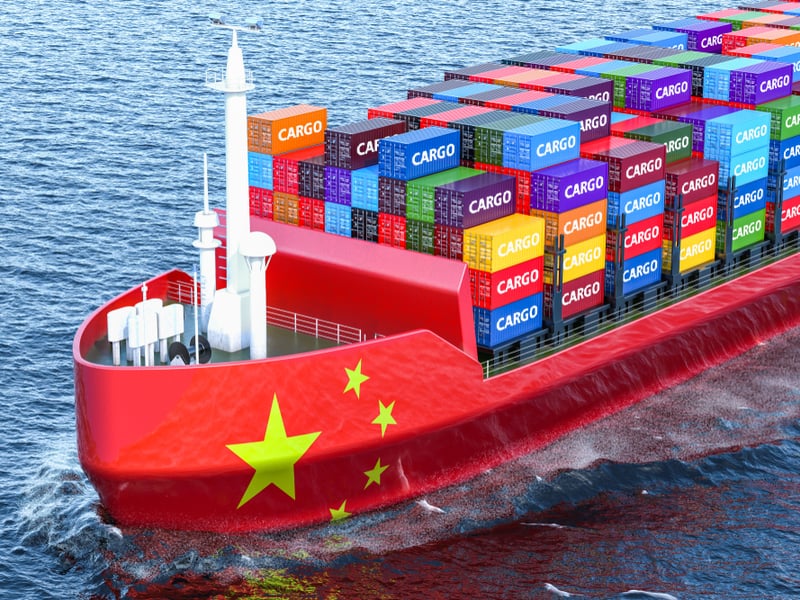In what could be ground zero in the new trade cold war between the United States and China, the new president of Panama, Laurentino “Nito” Cortizo is looking out for the interests of his nation. While the U.S. footprint is still present all over Panama, it appears to be eroding while Chinese influence is increasing. In fact, though all the candidates in the presidential election avoided the issue on the campaign trail, on the day of his election Cortizo stated just that: “While they’re (the U.S.) not paying attention, another one (China) is making advances,” he told Reuters.
But China’s push into Panama isn’t new. Chinese investment in Panama has been increasing since the late 1990s when the U.S. returned control of the canal to Panama, though it has increased substantially in the last several years. In 2016, the Chinese company Landbridge Group bought the largest port in Panama. Landbridge Group is a private company in the Chinese sense of the word, meaning it is subsidized by the Chinese government, takes orders from the Chinese government, and does nothing without the Chinese government’s approval. The company has been regarded with suspicion around the world for its questionable ambitions since its acquisition of the Port of Darwin in Australia. It was discovered that the company formed its own private military force called The People’s Military. The Panamanian port is on the canal’s Atlantic side in the Colon Free Trade Zone, which produces about $5 billion a year in trade.
But this is only the latest port acquisition; China owns the majority of ports on both ends of the canal! Furthermore, the two largest infrastructure projects around the canal since its expansion have both been contracted to the China Communication Construction Corp (CCCC), which is the world’s largest engineering group. Those projects are Atlantic Bridge, which was completed last year and the recently started new bridge across the Pacific side of the canal.
China’s intentions are abundantly clear when it comes to Panama. In December 2018, Xi Jinping became the first premier in the history of China to visit Panama. He was accompanied by executives from Chinese telecommunications, transportation and construction companies and participated in a trade show while there. The centerpiece of the show was a plan for a proposed $4 billion high-speed rail line across the Isthmus of Panama.
Xi’s visit to Panama is seen by many as a victory lap in its challenge to the U.S. for supremacy in canal-related infrastructure. Panama nearly suffered a complete financial meltdown a few years ago (ironically right after the completion of the expansion of the canal that promised to bring so much prosperity). With the release of the “Panama Papers,” major U.S. banks cut ties with the country and Panama realized it needed investment from somewhere to carry out its vision for the implementation of a comprehensive logistics strategy. China was more than happy to oblige and that same year diplomatic ties were formalized. The comprehensive logistics strategy, designed to take full advantage of the canal expansion, includes new ports, new bridges and even the completion of the Pan-American Highway, which runs from Alaska to Argentina but has a gap in Panama’s Darién Province near the country’s border with Colombia.
So far, the United States has shown very little public push-back against this Chinese incursion into Panama. To some Panamanian government officials, it seems that the United States takes its relationship with Panama for granted. This is not to say that the relationship between the United States and Panama isn’t strong on the day-to-day level. It’s rare that you meet a Panamanian who does not have family in the United States, has not lived in the United States, or are dual citizens themselves (because of being born in the Canal Zone when it was U.S. territory). In fact, the U.S. dollar is the official curry of the nation. However, there is a perception that the absence of direct investment by the U.S. on the scale of what China is investing shows that the U.S. is disinterested.
Panama isn’t the first government in the region to strengthen its ties with China recently. Countries across Latin America and the Caribbean have signed onto the Belt and Road Initiative that China launched in 2013, which promises $1 trillion in investments for infrastructure projects around the world to facilitate the exportation of Chinese goods.
But the Panama Canal feels different – it has always been perceived as such a uniquely American achievement. “The Panama Canal was the great work of the industrial age, as symbolic to the U.S. as the Great Wall is to China,” historian and Panamanian political analyst Richard Koster told Foreign Policy. “The Chinese plan to develop a permanent presence in Panama.”
That may spell trouble for the United States, whether in the short-term or the longer-term…
